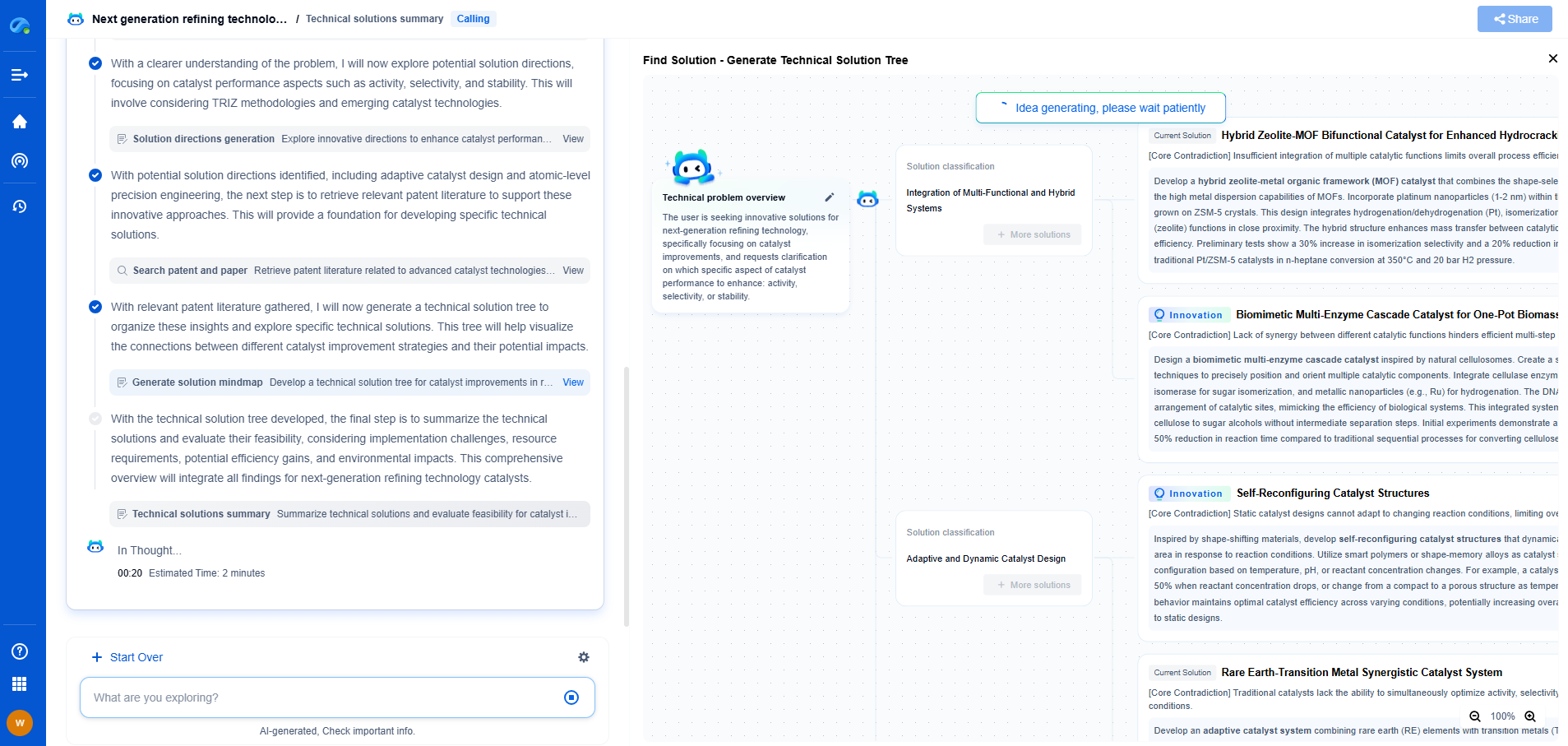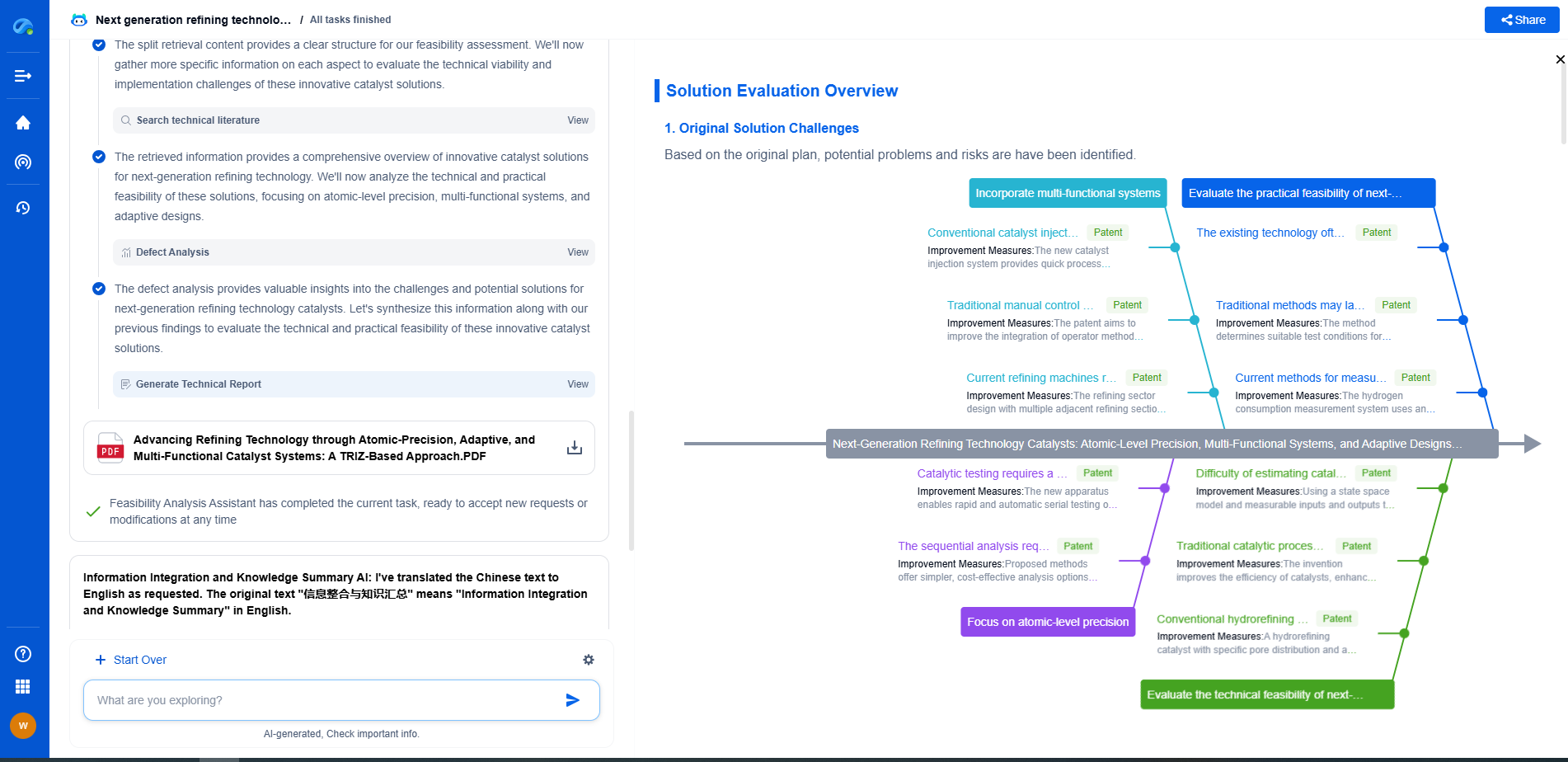The Limitations of PSNR and Why Perceptual Metrics Are Gaining Traction
JUL 10, 2025 |
In the field of image and video processing, evaluating the quality of reconstructed or compressed content is crucial. Traditionally, Peak Signal-to-Noise Ratio (PSNR) has been one of the most widely used metrics for this purpose. However, recent developments in perceptual metrics signal a shift in how we assess visual quality. This change is driven by the need for more accurate representations of human visual perception. Let’s explore why PSNR is falling short and why perceptual metrics are gaining traction.
Understanding PSNR
PSNR, or Peak Signal-to-Noise Ratio, is a mathematical measurement used to quantify the quality of an image compared to its original version. It is computed using the mean squared error (MSE) between the two images. Higher PSNR values generally indicate better quality, as they suggest a smaller error between the original and the processed image. This straightforward approach is appealing due to its simplicity and ease of computation.
Limitations of PSNR
Despite its popularity, PSNR has several limitations that hinder its effectiveness as a true measure of visual quality.
1. Non-Correlation with Human Perception
The primary criticism of PSNR is its lack of correlation with human visual perception. PSNR treats all pixel errors equally without considering the context in which they occur. This can lead to situations where two images with vastly different visual qualities have similar PSNR values. Human observers might rate an image with a lower PSNR as higher quality, reflecting discrepancies that PSNR fails to capture.
2. Sensitivity to Noise
PSNR is particularly sensitive to noise, treating it as a critical factor in its calculations. However, slight noise that doesn't significantly impair visual quality can disproportionately affect PSNR scores, leading to misleading assessments. This sensitivity is problematic in real-world applications where images are often subject to mild noise without substantial degradation of perceived quality.
3. Uniformity Assumption
PSNR operates under the assumption that all image signals are uniform and have the same importance, which is rarely the case in practical scenarios. Human eyes are more sensitive to certain colors and features, and areas like edges and textures often carry more perceptual weight than uniform regions. PSNR's uniform treatment of all pixels overlooks these perceptual nuances.
Rise of Perceptual Metrics
To address these shortcomings, the field has seen a shift towards perceptual metrics designed to align more closely with human vision.
1. Structural Similarity Index (SSIM)
SSIM is a perceptual metric that considers changes in structural information, contrast, and luminance. Unlike PSNR, SSIM evaluates the perceived changes in these three aspects, providing a more holistic measure of image quality that better aligns with human perception. SSIM has become a popular alternative precisely because of its ability to capture perceptual information that PSNR ignores.
2. Visual Information Fidelity (VIF)
VIF is another perceptual metric that assesses the quality of visual information present in an image relative to what the human eye can perceive. It models the human visual system to measure the fidelity of visual information. By focusing on perceptual relevance rather than pixel-level errors, VIF offers a more accurate representation of perceived image quality.
3. Deep Learning-Based Approaches
The advent of deep learning has opened up new possibilities for perceptual quality assessment. Convolutional neural networks (CNNs) can be trained to mimic human perception and evaluate images in a way that reflects subjective quality judgments. These AI-driven models can capture complex patterns and contextual information that traditional metrics like PSNR and even SSIM may miss.
Conclusion
As image and video processing technology advances, the need for accurate quality assessment metrics becomes more pressing. While PSNR has served as a useful tool for many years, its limitations in reflecting human perception have paved the way for perceptual metrics to take center stage. By focusing on how humans perceive images, these newer metrics provide a more reliable gauge of visual quality, essential for applications ranging from broadcasting to medical imaging. As perceptual metrics continue to evolve, they promise to offer insights that go beyond the numbers, delivering a richer, more human-aligned understanding of visual content quality.
Image processing technologies—from semantic segmentation to photorealistic rendering—are driving the next generation of intelligent systems. For IP analysts and innovation scouts, identifying novel ideas before they go mainstream is essential.
Patsnap Eureka, our intelligent AI assistant built for R&D professionals in high-tech sectors, empowers you with real-time expert-level analysis, technology roadmap exploration, and strategic mapping of core patents—all within a seamless, user-friendly interface.
🎯 Try Patsnap Eureka now to explore the next wave of breakthroughs in image processing, before anyone else does.
- R&D
- Intellectual Property
- Life Sciences
- Materials
- Tech Scout
- Unparalleled Data Quality
- Higher Quality Content
- 60% Fewer Hallucinations
Browse by: Latest US Patents, China's latest patents, Technical Efficacy Thesaurus, Application Domain, Technology Topic, Popular Technical Reports.
© 2025 PatSnap. All rights reserved.Legal|Privacy policy|Modern Slavery Act Transparency Statement|Sitemap|About US| Contact US: help@patsnap.com

